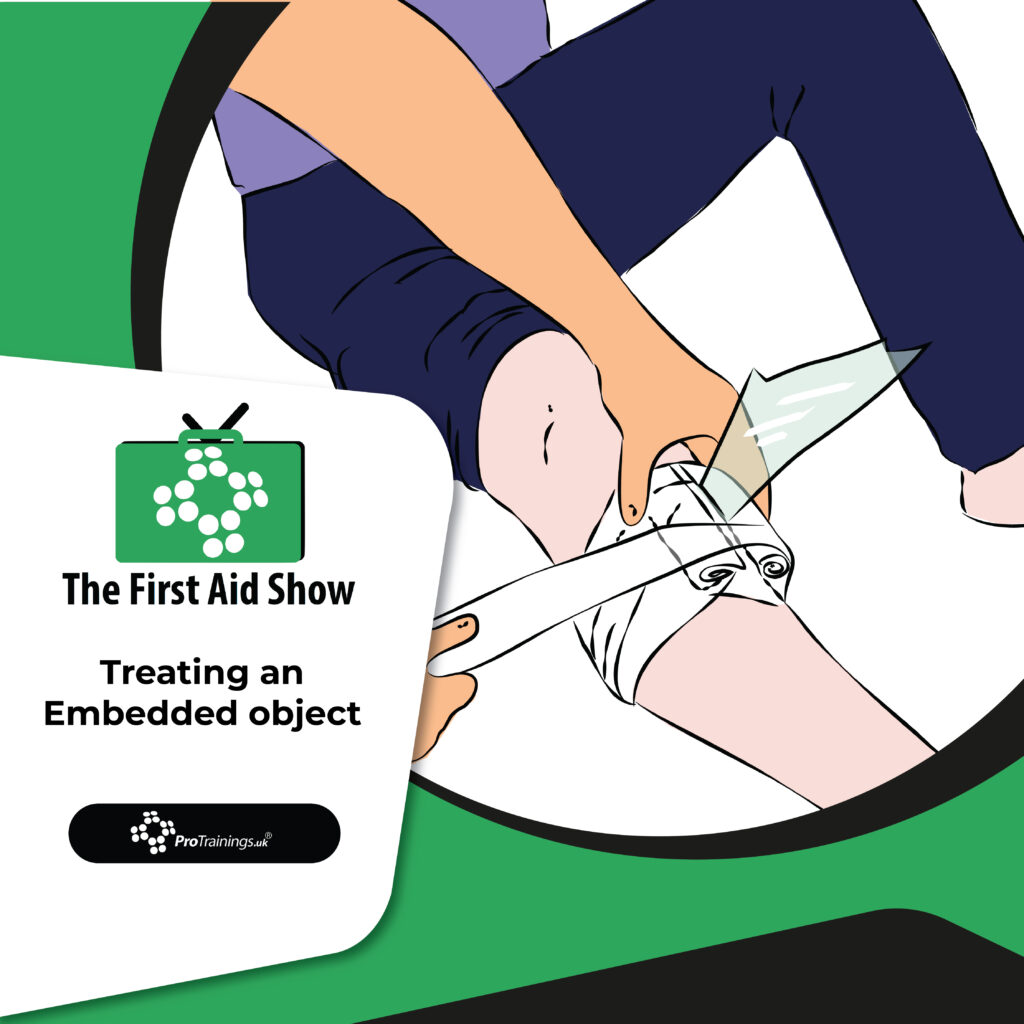Handling Embedded Objects: A First Aid Guide
Embedded objects, such as knives, glass shards, or wood splinters, can cause significant harm when they penetrate the body. Here’s how to address such injuries:
1. Understand the Danger
An embedded object is a foreign body that punctures and remains lodged inside the body. Common culprits include knives, glass fragments, or wooden splinters. Our focus here is on severe injuries that require securing the object and controlling bleeding.
2. Never Remove the Object
It’s a cardinal rule to leave an embedded object in place. In their panic, victims might attempt to pull it out, but this can exacerbate the wound. For instance, a glass shard can slice as it’s removed, causing further injury. A lodged knife may be plugging a vital artery; removing it could result in uncontrolled bleeding. Some medical cases suggest that leaving the knife in place might have increased survival chances.
3. Stabilise and Control Bleeding
- Wear Protective Gloves: Always use gloves to ensure you aren’t exposed to blood or other bodily fluids.
- Use Two Dressings: Place dressings on both sides of the embedded object. This stabilizes the object and helps control the bleeding.
- Bandage Carefully: Secure the dressings with another bandage. Ensure you don’t exert pressure on the embedded object, worsening the injury. If necessary, you can snip the bandage so it doesn’t press on the protruding part of the object.
4. Immobilise When Possible
Based on the injury location, try immobilizing the affected area. For instance, if there’s a glass shard in the hand, consider using an elevation sling. Ensure the sling doesn’t push the shard deeper into the wound.
5. Ensure Safe Transport
It’s essential to prevent any additional injury during transportation. Depending on the injury’s severity and your location, either call emergency medical services (EMS) or transport the victim to a hospital immediately.
Looking for More Guidance?
For a thorough understanding of first aid techniques or to explore related equipment options, connect at 01206 805359 or email at support@protrainings.uk. Check out www.protrainings.uk for specialized training programs and www.first-aid-online.co.uk for a range of first aid equipment.


